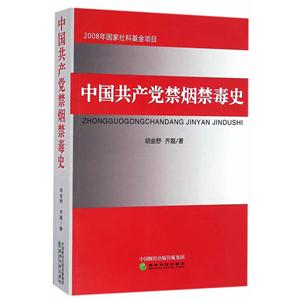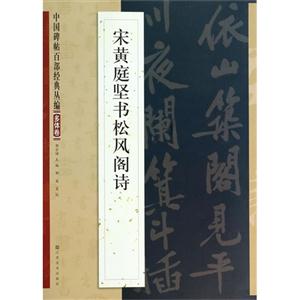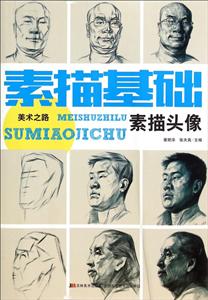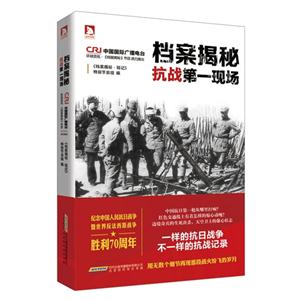中国少数民族服饰(英文)

|
中国少数民族服饰(英文)作者:本书编 开 本: 书号ISBN:7508514602 定价:88.0 出版时间:2008-09-17 出版社:五洲传播出版社 |
中国少数民族服饰(英文) 本书特色
《中国少数民族服饰:英文》是中国民族多元文化丛书之一。
中国少数民族服饰(英文) 内容简介
《中国少数民族服饰:英文》内容简介:Costume is the crystal of human wisdom as well as fruits out of their labor. During human being's long process of evolution and development, minority cos-tumes in China also have had their own changes and development, becoming the cultural symbol for China's 56 nationalities by decorating their living world.
Costume is a visual language and window for civilization.
中国少数民族服饰(英文)中国少数民族服饰(英文) 前言
Costume is the crystal of human wisdom as well as fruits out of their labor. During human being's long process of evolution and development, minority cos-tumes in China also have had their own changes and development, becoming the cultural symbol for China's 56 nationalities by decorating their living world.
Costume is a visual language and window for civilization. Minority costumesin China are rich in ornaments and beautiful in color. Some are long while others are short; some are simple while others are complicated. But as a whole, there is a difference between north robes and south skirts. The northern nomadic people living in the Mongolian Tableland, the Tibetan Tableland and Xinjiang Basingrassland, or the nationalities that have had the life of nomadism and hunting,have chosen their production and living ways belonging to the herding and hunt-ing civilizations as a reason of their living space in the north of the Great Wall for a long time with freezing cold tablelands, deserts, forests and grasslands,such as the Mongols, Tibetan, Ewenki, Oroqen, Manchu, Kazakh, and etc. Theywear robes and boots, which become the symbol for horse-riding nationalities.The minorities in the south living on rice economy are known for their skirts.Even the landforms vary in China's south central, south-west and south-east, asmost of the regions have a warm, humid and rainy climate, the minorities livingin these regions choose rice planting as their living method, such as Tong, Miao,Lisu, Buyi, Pumi, De'ang, Dai, Zhuang and Gaoshan, with their costumes suit-able for their daily life in the style, quality or color. Each nationality's costume is its self-identification. Skirts are popular in the southern minorities, whereasthe style, color and design vary greatly from each other. Dai's tube skirts, shortskirts in Hani and Jinuo, and skirts called "Bafuluoqun" in Va and Tujia have allbecome kinds of decorations and signs distinguishing themselves from others.The women of Shui make an even more outstanding difference from others by putting on skirts outside their long pants.
中国少数民族服饰(英文) 目录
PrefaceChapter I
Minority Costumes in North Eastern Regions and The Inner Mongolian Region
I. Mongolian Costumes
II. Manchu's Cheongsam and Korean Costumes
III. Unique Fish-Skin Clothing and Featured Skin Garments
IV. Hats and Boots for Northern Nationalities
Chapter II
Minority Costumes in North Western Regions
I. Islamic Simple Dress
II. Robes, Qiapan and Kupu in Nationalities in Xinjiang
III. Flexible Pullovers and Embroidered Garments in North Western Nationalities
IV. Yugur's Charming Costume and Tu's Bright Costume
V. Hats and Boots with Northern Characteristics
ChapterⅢ
Minority Costumes In South Western Regions
I. Robes for Multi-nationalities on the World Roof
II. Features of the Colorful "Southern Skirts"
II1. Pullovers and Festival Garments
IV. Rich Hair Styles and Hats
Chapter IV
Minority Costumes In South Central And South Eastern Regions
I. Costumes for Zhuang and Maonan
文化 中国文化
在线阅读
- 最新内容
- 相关内容
- 网友推荐
- 图文推荐
| [高考] 2022 西安电子科技大学《软件工程》大作业答案 (2022-04-25) |
| [家长教育] 孩子为什么会和父母感情疏离? (2019-07-14) |
| [教师分享] 给远方姐姐的一封信 (2018-11-07) |
| [教师分享] 伸缩门 (2018-11-07) |
| [教师分享] 回家乡 (2018-11-07) |
| [教师分享] 是风味也是人间 (2018-11-07) |
| [教师分享] 一句格言的启示 (2018-11-07) |
| [教师分享] 无规矩不成方圆 (2018-11-07) |
| [教师分享] 第十届全国教育名家论坛有感(二) (2018-11-07) |
| [教师分享] 贪玩的小狗 (2018-11-07) |






